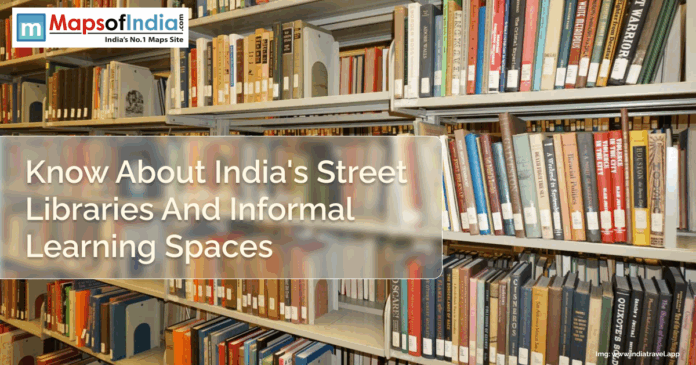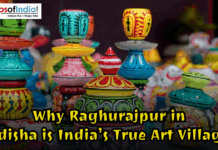India is home to a dance of different communities and regions, each representing its unique culture. Amongst them, a hidden part of it is the passion for books. These learning spaces, informal as they are, are remaking their neighbourhoods by turning them into hotspots for people who love books and also those who want to know more about the world. These libraries serve as an individual and collective invitation to enter an internal world of self-discovery, transporting people of every age into a fantasy realm of knowledge. Like street libraries in cities such as Kolkata, the benefits do not limit themselves to making books more readily available; they offer community ties and empower individuals without much hassle.
A chain of Street libraries in India
The phenomenon of street libraries is on the increase, and such initiatives are galvanized in India. Dubbed “Take one, leave one,” marketing literacy has brought this idea to various cities, towns, and farmlands. Folks supposedly work hard to entertain themselves with collection development for all ages and topics.
This concept is not new, but the probability of providing everyone free access to books should not be negated. Apart from individually doing their homework to nurture children with literacy, every library enriches the feeling of community spirit while simultaneously triggering conversations over books. This is a succession of knowledge being strewn about as the activities are rested on by more and more members daily.
The street libraries located in Kolkata seem to be one of a kind as compared to the others on the Indian streets
In the bazaars of Kolkata, the street-side booksellers have established Bibliopoles (Street libraries) – a unique Indian concept. These flavoursome spots are more than to be lent books; they become a think-tank, a coterie club where people come to strengthen mental muscles.
Also, libraries across the city offer books with colourful facilities that attract readers of all ages. The collection is likely diverse enough to feature literary works from the national territory and international compilations, aiming to instil the habit of reading in individuals from various energy fields. This novel idea transforms open spaces into vibrant, safe havens of learning, exploration, and discovery.
Eclectic book collection
Besides the most ancient romantic classic-type books and contemporary all-time favourites, this simple market’s variety presents yet more choices that two completely different would not want to leave the shop with closed eyes.
Most street libraries are known to provide regional language texts and educational materials. In this way, reading culture not only reads the number of literate citizens but also acknowledges the country’s cultural heritage. They encourage people to explore different literary genres by offering a variety of genres, and in this way, love for reading gets rooted in the community members.
Safe and accessible spaces
Opening the public street libraries and making them children-friendly for play and safe access to the contents will work.
Street libraries can attract schoolchildren from around the area to enjoy reading and develop a reading culture. Libraries in the neighbourhood influence children to enjoy the world of books without hindrance, feeling safe and without any fears. They create an environment in which inquisitiveness finds a better home.
Libraries within community centres, parks, or out-of-doors allow one to come closer most effectively. These sites then prioritize safety and inclusion. Such street libraries would radically change the existing locality into nice pleasure spots for studying and exploring. This creates a joyous and distinctive environment where members of widely divergent communities can read at will and enjoy themselves.
Street libraries located outside schools
Libraries situated just outside the educational institutions are related to them and can easily be accessed by community members.
Encouraging children in slums
Street libraries provide a beacon of light for slum children and offer an opening into the world outside with reading materials that may be inaccessible to many. Storytelling and reading activities are organized in these spaces to ignite the children’s fantasy and creativity.
They all gravitate towards the shelves filled with enchanting titles, for they have worlds and worlds beyond themselves. In a way, it helps them agitate reading habits and kindle dreams, ambitions, and aspirations. Such literacy stimulations, courtesy of street libraries, define a crucial place towards a brighter future for these little minds.
Volunteering and Civic Culture
Volunteerism is a build-and-foster aspect of civic culture in the street libraries of India. The entire concept hinges upon the enthusiasm and support given by community members who spend their time, skills, and resources creating these spaces. Such places, therefore, require a volunteer basis to be brought alive as hubs of learning and literacy.
The spirit of giving back creates a sense of ownership among people. It encourages individuals to serve one another and strengthens communities while still maintaining equal access to knowledge for all. Thus, street libraries emerge as engagement hubs for diverse populations around them.
People are exposed to spaces where they can read texts different from their textbooks and thus grow a love of literature. These spaces are alluring and aesthetically appealing places to explore unimaginable things.
In this way, these libraries give free access to many people with a limited income as the schools are located near the schools. Children from different backgrounds can learn about many other genres and authors their fellow students are reading. Books confirm their learning and enhance their imagination and creativity. This initiative allows the neighbourhood to get involved by providing personal contributions such as book donations and directly engaging with and organizing the reading activities.
Street libraries in India are doing so by emphasising and dissolving barriers to literacy. These spaces provide people with free books to help them enter the world of literature whose doors they haven’t been able to open. Random reading promotes innovation by providing temporary stimulation and increasing new work.
In informal learning spaces, retelling and skills drills are in running culture. With time, many people have become complacent and have shared some things they have read in the libraries. This always triggers a discussion of ideas in a person’s head. Everybody enjoys this bonding experience with their favourite literature, reinforcing reading as a lifelong thing.




